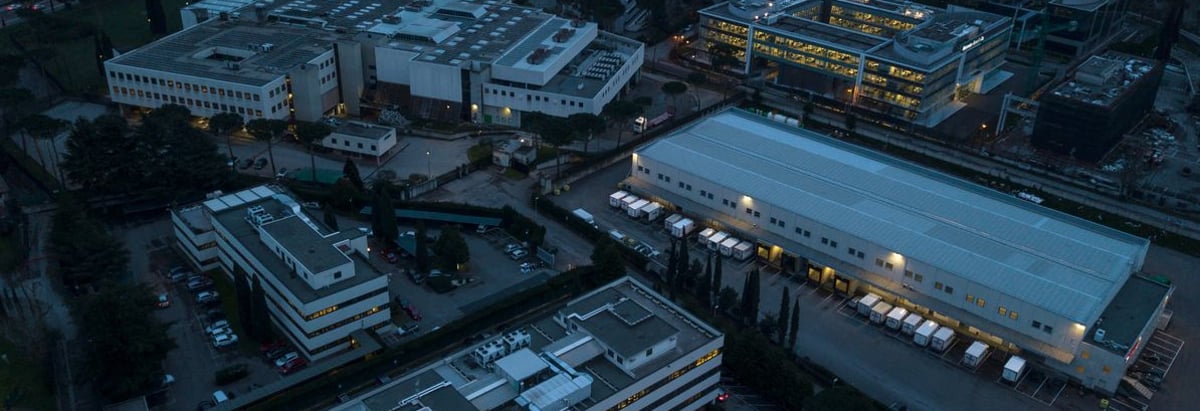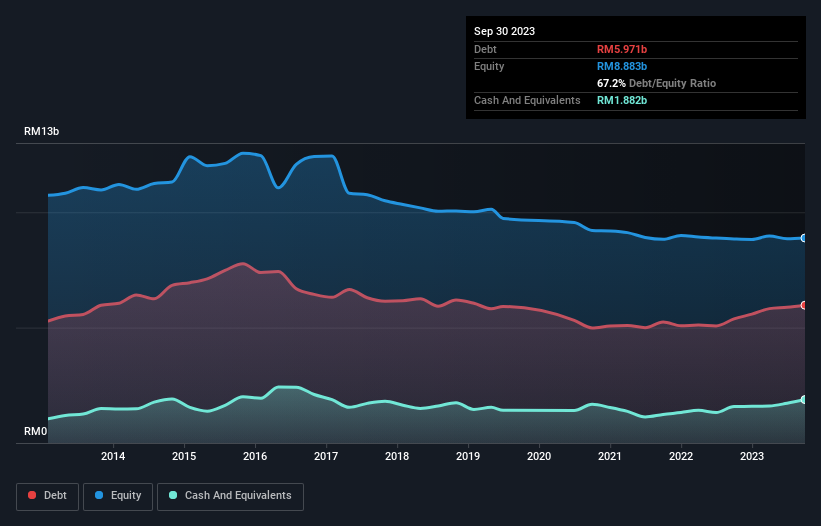Stock Analysis
- Malaysia
- /
- Industrials
- /
- KLSE:BJCORP
Berjaya Corporation Berhad (KLSE:BJCORP) Has A Somewhat Strained Balance Sheet

Howard Marks put it nicely when he said that, rather than worrying about share price volatility, 'The possibility of permanent loss is the risk I worry about... and every practical investor I know worries about.' So it might be obvious that you need to consider debt, when you think about how risky any given stock is, because too much debt can sink a company. As with many other companies Berjaya Corporation Berhad (KLSE:BJCORP) makes use of debt. But the more important question is: how much risk is that debt creating?
Why Does Debt Bring Risk?
Generally speaking, debt only becomes a real problem when a company can't easily pay it off, either by raising capital or with its own cash flow. If things get really bad, the lenders can take control of the business. However, a more common (but still painful) scenario is that it has to raise new equity capital at a low price, thus permanently diluting shareholders. Having said that, the most common situation is where a company manages its debt reasonably well - and to its own advantage. When we examine debt levels, we first consider both cash and debt levels, together.
View our latest analysis for Berjaya Corporation Berhad
How Much Debt Does Berjaya Corporation Berhad Carry?
You can click the graphic below for the historical numbers, but it shows that as of September 2023 Berjaya Corporation Berhad had RM5.97b of debt, an increase on RM5.38b, over one year. However, it also had RM1.88b in cash, and so its net debt is RM4.09b.

How Strong Is Berjaya Corporation Berhad's Balance Sheet?
We can see from the most recent balance sheet that Berjaya Corporation Berhad had liabilities of RM6.41b falling due within a year, and liabilities of RM7.05b due beyond that. Offsetting these obligations, it had cash of RM1.88b as well as receivables valued at RM2.09b due within 12 months. So its liabilities outweigh the sum of its cash and (near-term) receivables by RM9.49b.
This deficit casts a shadow over the RM1.82b company, like a colossus towering over mere mortals. So we'd watch its balance sheet closely, without a doubt. After all, Berjaya Corporation Berhad would likely require a major re-capitalisation if it had to pay its creditors today.
We measure a company's debt load relative to its earnings power by looking at its net debt divided by its earnings before interest, tax, depreciation, and amortization (EBITDA) and by calculating how easily its earnings before interest and tax (EBIT) cover its interest expense (interest cover). Thus we consider debt relative to earnings both with and without depreciation and amortization expenses.
While Berjaya Corporation Berhad's debt to EBITDA ratio (5.0) suggests that it uses some debt, its interest cover is very weak, at 1.8, suggesting high leverage. So shareholders should probably be aware that interest expenses appear to have really impacted the business lately. However, one redeeming factor is that Berjaya Corporation Berhad grew its EBIT at 14% over the last 12 months, boosting its ability to handle its debt. The balance sheet is clearly the area to focus on when you are analysing debt. But it is Berjaya Corporation Berhad's earnings that will influence how the balance sheet holds up in the future. So when considering debt, it's definitely worth looking at the earnings trend. Click here for an interactive snapshot.
Finally, a company can only pay off debt with cold hard cash, not accounting profits. So we always check how much of that EBIT is translated into free cash flow. Over the most recent two years, Berjaya Corporation Berhad recorded free cash flow worth 73% of its EBIT, which is around normal, given free cash flow excludes interest and tax. This free cash flow puts the company in a good position to pay down debt, when appropriate.
Our View
To be frank both Berjaya Corporation Berhad's interest cover and its track record of staying on top of its total liabilities make us rather uncomfortable with its debt levels. But on the bright side, its conversion of EBIT to free cash flow is a good sign, and makes us more optimistic. Overall, we think it's fair to say that Berjaya Corporation Berhad has enough debt that there are some real risks around the balance sheet. If all goes well, that should boost returns, but on the flip side, the risk of permanent capital loss is elevated by the debt. Even though Berjaya Corporation Berhad lost money on the bottom line, its positive EBIT suggests the business itself has potential. So you might want to check out how earnings have been trending over the last few years.
If you're interested in investing in businesses that can grow profits without the burden of debt, then check out this free list of growing businesses that have net cash on the balance sheet.
Valuation is complex, but we're helping make it simple.
Find out whether Berjaya Corporation Berhad is potentially over or undervalued by checking out our comprehensive analysis, which includes fair value estimates, risks and warnings, dividends, insider transactions and financial health.
View the Free AnalysisHave feedback on this article? Concerned about the content? Get in touch with us directly. Alternatively, email editorial-team (at) simplywallst.com.
This article by Simply Wall St is general in nature. We provide commentary based on historical data and analyst forecasts only using an unbiased methodology and our articles are not intended to be financial advice. It does not constitute a recommendation to buy or sell any stock, and does not take account of your objectives, or your financial situation. We aim to bring you long-term focused analysis driven by fundamental data. Note that our analysis may not factor in the latest price-sensitive company announcements or qualitative material. Simply Wall St has no position in any stocks mentioned.
About KLSE:BJCORP
Berjaya Corporation Berhad
Provides consumer marketing, direct selling, and retailing services.
Solid track record and good value.

